
This library of books, audio, video, and other materials from and about India is curated and maintained by Public Resource. The purpose of this library is to assist the students and the lifelong learners of India in their pursuit of an education so that they may better their status and their opportunities and to secure for themselves and for others justice, social, economic and political.
This item has been posted for non-commercial purposes and facilitates fair dealing usage of academic and research materials for private use including research, for criticism and review of the work or of other works and reproduction by teachers and students in the course of instruction. Many of these materials are either unavailable or inaccessible in libraries in India, especially in some of the poorer states and this collection seeks to fill a major gap that exists in access to knowledge.
For other collections we curate and more information, please visit the Bharat Ek Khoj page. Jai Gyan!
IRC : 31-1969
Published by
THE INDIAN ROADS CONGRESS
Jamnagar House, Shahjahan Road
New Delhi-110 011
1985
Price Rs. 80/-
(Plus Packing & Postage)
ROUTE MARKER SIGNS FOR STATE ROUTES
On the recommendation of the Planning Commission, States have declared certain through routes within their respective jurisdictions as State Routes and assigned them route numbers. It has been considered desirable for various reasons that route marking signs should be fixed along State Routes.
To ensure that a uniform type of route marker sign is used on all State Routes in India, the type design given herein has been prepared by the Specifications and Standards Committee (personnel given on inside front cover). The design was approved by the Executive Committee in their meeting held in March 1969 and later by the Council of the Indian Roads Congress in their meeting held at Bhubaneswar on the 26th and 27th May, 1969 for general adoption.
A ‘State Route' marker sign shall consist of a shield marked on a rectangular plate 450 mm by 600 mm. The design is given in Plate 1.
The border of the shield shall be in black. The upper portion of the shield within the black border shall have a brilliant green background, the colour conforming to the Indian Standard Colour No. 221. The name of the State in full or in an abbreviated* form, shall appear in white over the green background. The background of the lower portion shall be white. The letters ‘SR’ (State Route) and numerals of the route number shall be in black on this white backrgound.
The size, shape and spacing of letters and numerals shall conform to those given in Fig. 1 and Plates 1, 5 and 6.
* N.B.—Names of States upto five letters in length can be accommodated in full on the shield. For longer names, thinner letters (the height however remaining 80 mm) or suitable abbreviations may be used.1

Fig. 1
The sign shall be erected on State Routes ahead of then intersections with other important roads, immediately after the intersections as confirmatory signs, and at such other points that may be considered necessary to guide the through traffic, e.g., at suitable places through built-up areas.
The route markers shall be erected as indicated in the drawing titled “Arrangement for Erection of State Route Marker Signs’", Plate 2.
On roads without kerbs, they shall have a clear distance of 2 to 3 metre between the post and the edge of the carriageway. On roads with kerbs, the sign post shall not be less than 60 cm away from the edge of the kerb. To avoid specular reflection from the sign face, the sign shall be turned slightly away from the road as indicated in Plate 2.
The sign shall be erected on the State Route at a distance of 100 to 150 metre ahead of the junction on the left hand side of the road as one approaches the junction.2
When the sign is erected at a junction, the direction which the State Route takes at the junction shall be indicated on a definition plate of the size 300 mm by 250 mm fixed below the shield as shown in Plate 2.
Background colour of the definition plate shall be white. The border and the arrow shall be in black.
Some type designs of arrows for use on the definition plate in different situations are given in Plate 3.
When a numbered route intersects or takes off from a State Route, indication about the number of the intersecting route may be provided by erecting, ahead of the intersection, its route marker sign along with the marker of the State Route being travelled upon. Such auxiliary markers shall be mounted on the same post as carrying the regular route marker and be accompanied by a definition plate carrying a single or a double-headed arrow pointing in the general direction or directions in which that route may be followed.
The manner of putting up such assemblies is illustrated through two examples given in Plate 4.
Similar to other traffic signs, the reverse side of all route marker signs should be painted in unobtrusive grey, Indian Standard Colour No. 630. The sign post should be painted in 25 cm bands, alternately black and white, with lowest band next to the ground being black.
The sign may be made of either enamelled or painted steel plate.3
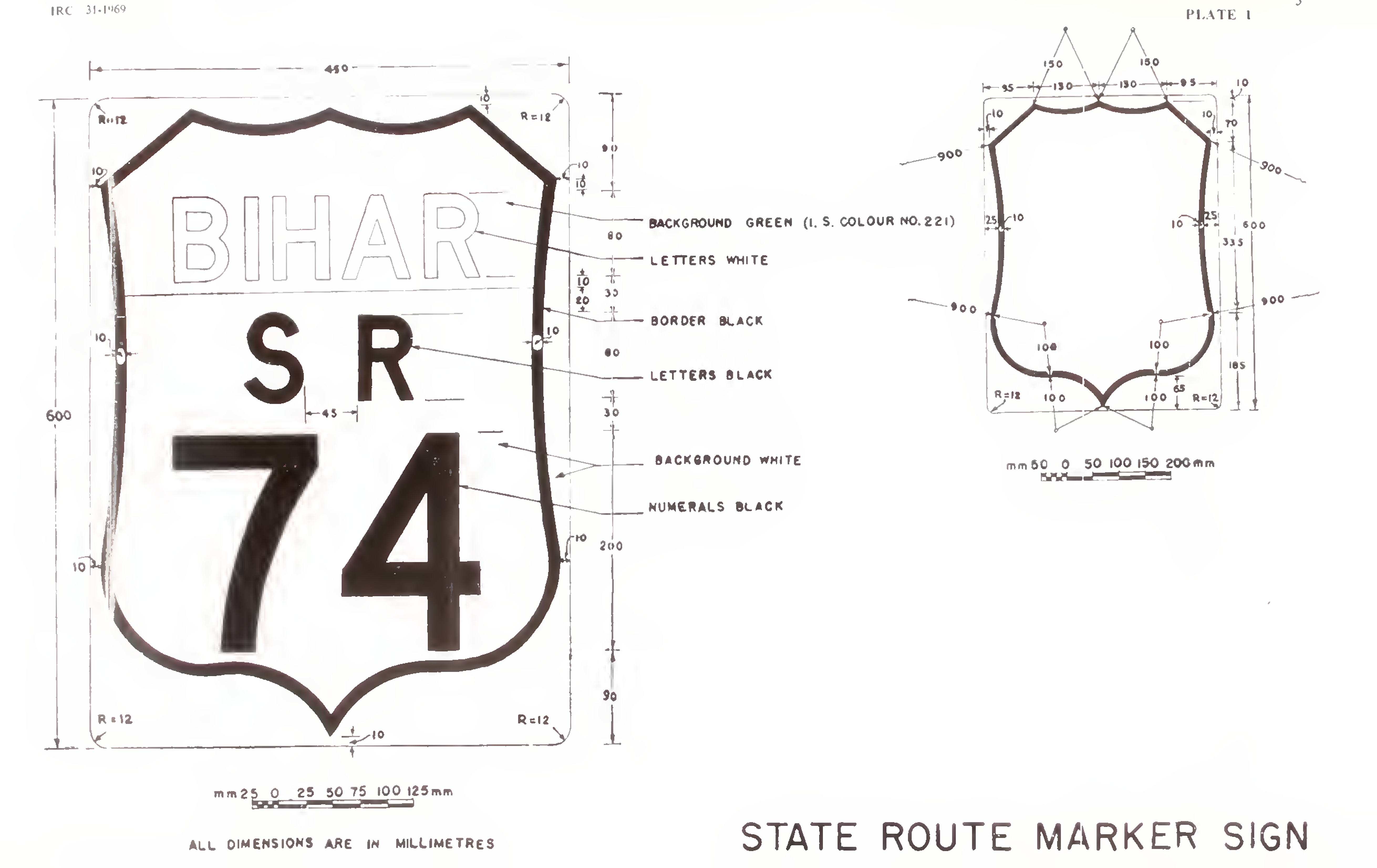 5
5
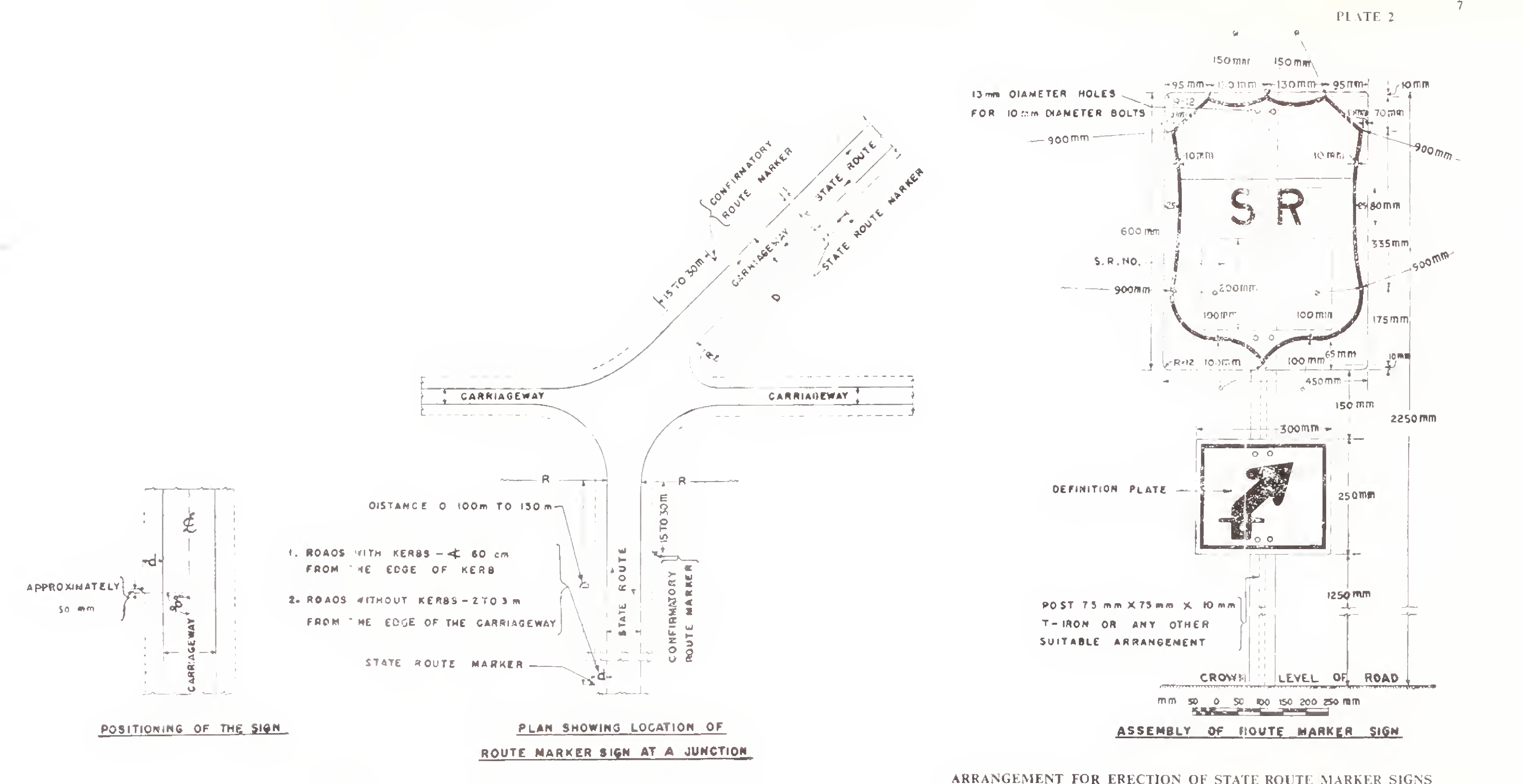 7
7
 9
9
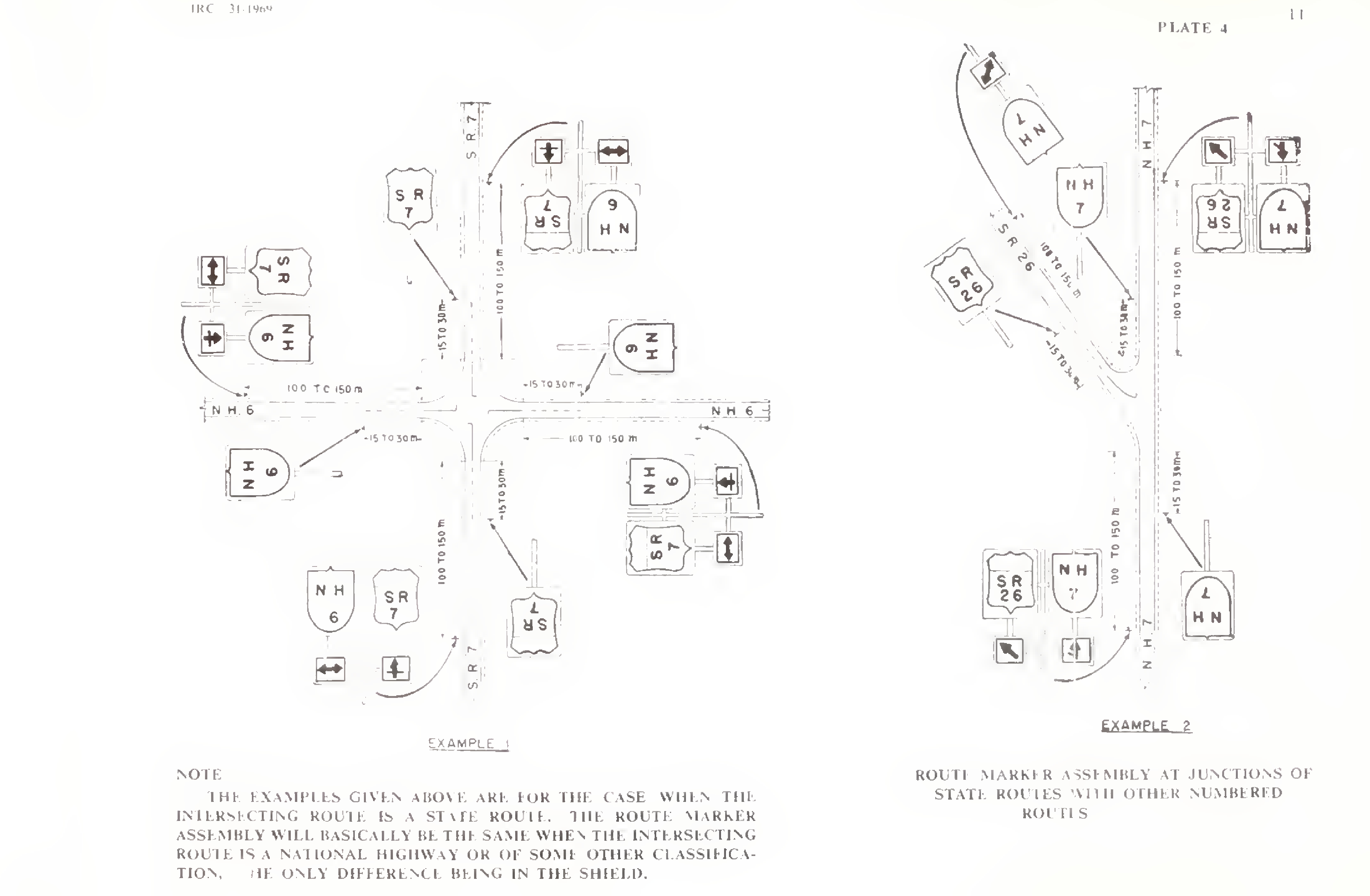 11
11
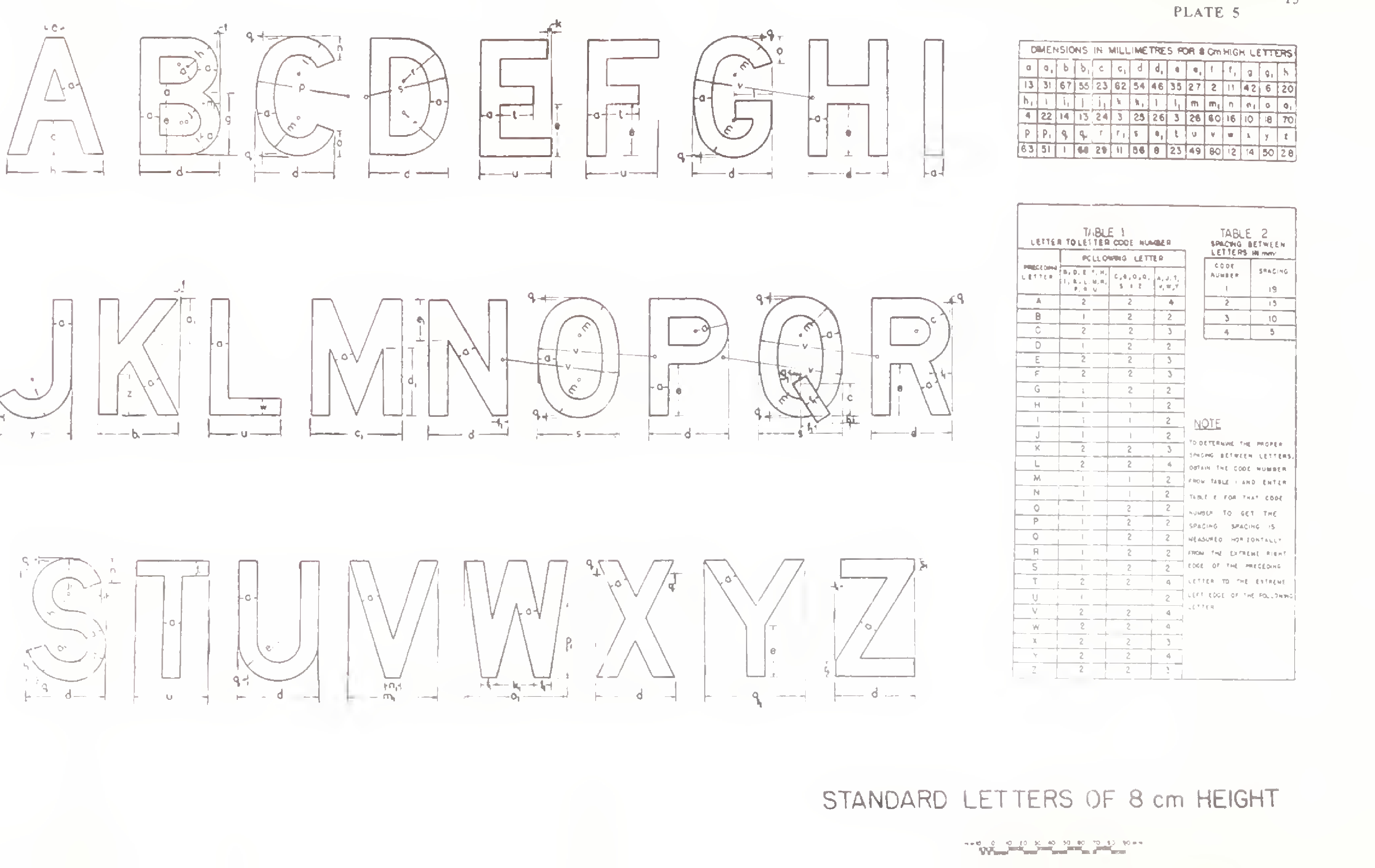 13
13
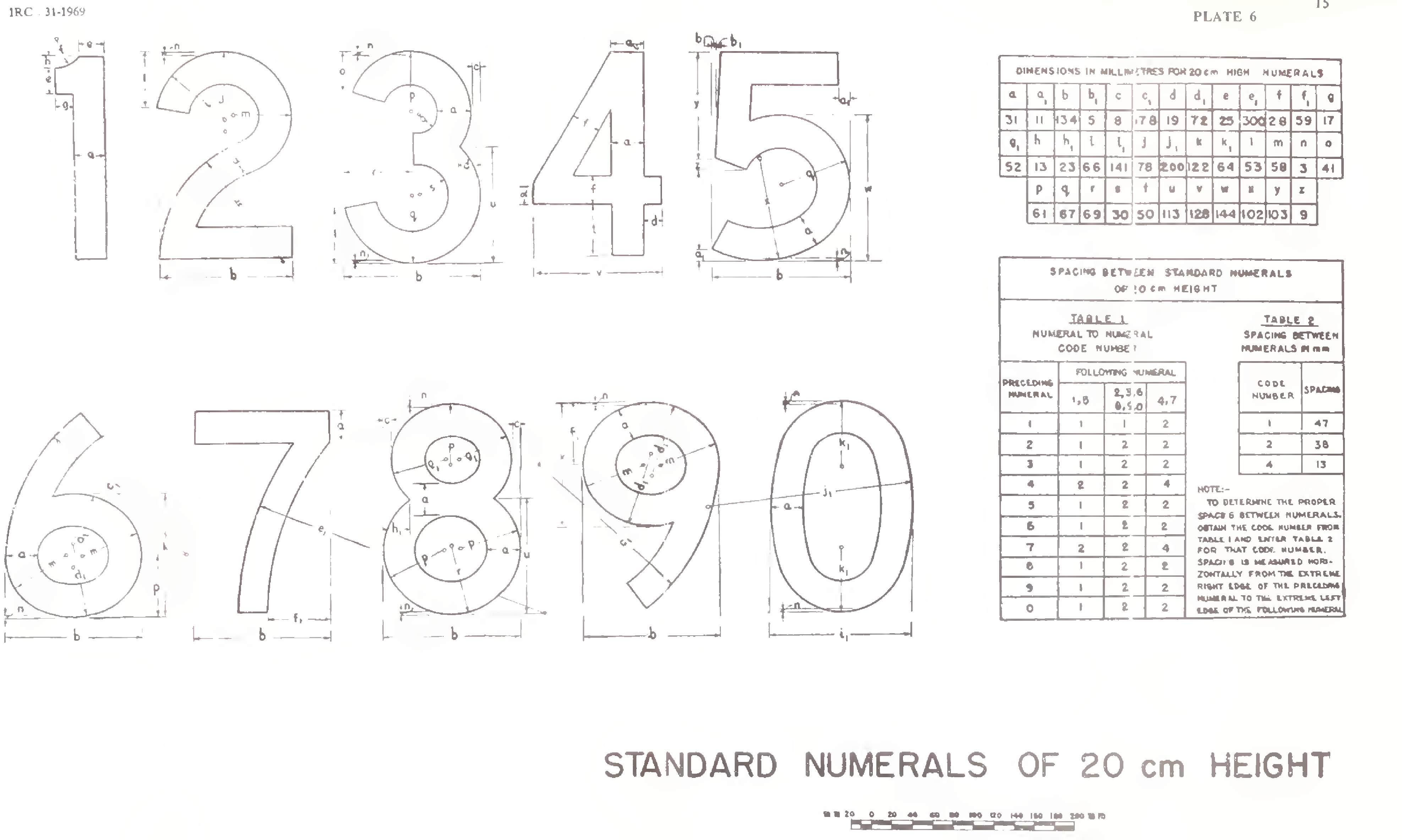 15
15